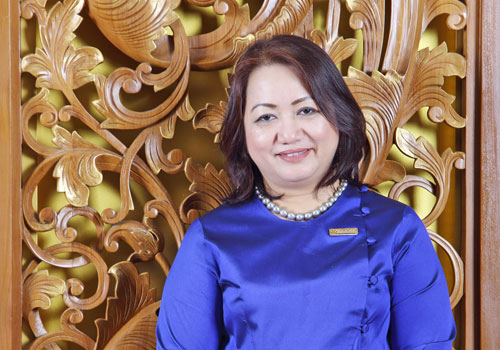A positive perspective on Myanmar’s hotel glut
Last September, amid an alarming rise in the number of unoccupied hotel rooms in cities like Yangon and Mandalay, the Ministry of Hotels and Tourism (MOHT) announced tighter controls on the development of new hotels in congested areas.
Occupancy rates in Myanmar last year were under 40 per cent during the rainy season, according to Bloomberg, quoting figures from the Union of MyanmarTravel Association. But even during the peak season between November and March, hotels nationwide were, on average, only half full.
The order may have come as a blow to hotel investors, yet the current glut is a far cry from just five years ago, when there were just a handful of high-end hotels in Yangon. “We used to only have five hotels in Yangon and all of them were five-star,” May Myat Mon Win, vice-chair of the Myanmar Tourism Federation, which helps to promote tourism.
“But in the five years since the country opened up, we now have a whole range of accommodation options, from two-star hotels to five-star, hostels, inns and guesthouses totaling 18,000 rooms altogether,” she said.
Up until just a few years ago, good hotels in Yangon were known for their exclusivity and exorbitant rates. These days though, you can easily find a clean and good quality hostel or a 3-star hotel in a good location for an affordable price. “Myanmar’s hotel sector has come a remarkably long way in a very short time,” she said.
Demand and supply
Now, problems are emerging for the sector as the number of unoccupied rooms in popular destinations rises. “There is an oversupply of hotel rooms and competition is rising. So, we are now seeing a pause in development,” May Myat Mon Win said.
But that’s all par for the course in a sector that is rapidly developing. As more funds are channeled into developing Myanmar’s infrastructure, accessibility and attractions, and as more comprehensive data on tourist arrivals and expectations become available, demand will gradually balance out against supply.
“In the hotel business, supply will almost always outpace demand. But demand will catch up. It just doesn’t happen overnight,” she said.
As at June 30, 2017, a total of $2.9 billion in foreign direct investments had been approved for the hotel and tourism sector, about 3.9% of total approved FDI of $72.3 billion, according to data from the Directorate of Investment and Company Administration (DICA).
FDI from existing enterprises stood at $2.6 billion, about 4.2% of total existing investments.
Data problem
One of the reasons for the rapid influx of investment into hotels is the rising number of travellers arriving in Myanmar. According to data from the MOHT, total arrivals hit a high of 4.7 million in 2015, up from 3.1 million in 2014.
In 2013, when the MOHT under the previous administration drafted its Master Plan for the industry, a target of 7.5 million visitors yielding an estimated $10.2 billion in revenues by 2020 was announced. That is almost a sixth of the World Bank’s estimate of $63 billion for the entire economy.
“Investors looked at the rising number of arrivals and got excited. But there was no breakdown or analysis of the data back then. What we now know is that the arrival numbers were inflated. Truck drivers ferrying across Myanmar’s borders, sometimes more than once a day, were double counted.”
Indeed, revised statistics now show that visits to Myanmar actually plunged 38 percent in 2016 from the year before, falling to 2.9 million. Out of that number, just 1.2 million were international airport arrivals.
 Travellers to Myanmar now enjoy a range of options for accommodation, from low-end guesthouses to five-star hotels. Photo – The Myanmar Times
Travellers to Myanmar now enjoy a range of options for accommodation, from low-end guesthouses to five-star hotels. Photo – The Myanmar Times
Changing trends
The drastic drop in arrivals may be a setback for the hotel sector, but May Myat Mon Win, who is also general manager of Chatrium Hotel in Yangon, is not worried. The way she sees it, the hotel business is a long term one, and hoteliers must be willing to innovate and adapt to changing cycles and customer demands.
In fact, the industry is now in much better shape than in 2012, when expectations were low, deposits were done via bank transfer and only crisp, new US dollar notes were accepted as payment. In those days, money transfers could only be done via
government banks.
“If a customer made a transaction via Citibank, for example, the funds would arrive only days later after moving halfway around the world. Sometimes, the money did not arrive at all,” she said.
But the biggest change is in customer expectations. These days, customers expect instant responses to queries fired over email. Just five years ago, hoteliers responded within 24 hours or more.
“With the Internet and the amount of competition in the market now, if we don’t live up to customer expectations, they will go elsewhere,” said
May Myat Mon Win.
The mix of customers at various hotels has also changed. Now that many other cheaper options are available, five-star hotels like Chatrium are seeing a rising number of foreign dignitaries and high-level corporate executives check in, while many tourists have taken their business elsewhere.
Whatever the case, the long term prospects for Myanmar’s hotel sector are still intact. “Just take a look at Angkor Wat in Siem Reap. It enjoys more than four million tourists per year. Just 300,000 tourists visit Bagan a year. There is still a lot of potential.”
Source: http://www.mmtimes.com/index.php/business/27108-a-positive-perspective-on-myanmar-s-hotel-glut.html


 English
English




